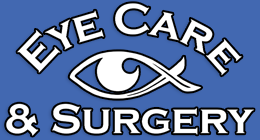Multifocal Lens Implants

Until recently, patients had few implant choices with cataract surgery. The most commonly used implants are single focal length implants (IOLs) that are focused in the distance, requiring reading glasses to see up close. The other single focal length choice is monovision, which focuses one eye in the distance and one eye up close. Monovision can result in good functional vision at most distances, but cannot provide the binocular depth perception of the new premium lens technologies, such as the ReStor and Crystalens lenses.
Patients now have the opportunity to choose a premium lens such as the
ReSTOR or Crystalens. These new lens technologies have the benefit of decreasing or eliminating the need for reading glasses. For correction of astigmatism, patients have the choice of the Acrysof Toric Lens.
Presbyopic Correcting Lenses:
Presbyopia correcting IOLs greatly increase the patient’s independence from glasses following surgery. Patients can read a book, drive a car, and participate in activities such as golf and tennis with increased freedom from glasses.
ReSTOR Intraocular Lens:
 The ReSTOR lens allows for clear vision at distance and near, however; intermediate distances may be somewhat out of focus. No lens can promise perfect vision or total freedom from glasses, however; FDA studies with this lens showed 80% of patients reported that they never wore glasses after the surgery. When patients did wear glasses, it was most often for activities such as computer use or reading sheet music.
The ReSTOR lens allows for clear vision at distance and near, however; intermediate distances may be somewhat out of focus. No lens can promise perfect vision or total freedom from glasses, however; FDA studies with this lens showed 80% of patients reported that they never wore glasses after the surgery. When patients did wear glasses, it was most often for activities such as computer use or reading sheet music.
Crystalens:
 The Crystalens allows clear vision at distance, intermediate and near. Unlike the ReSTOR lens, it is a monofocal lens which is dependent on moving within the eye to achieve distance, intermediate and near vision.
The Crystalens allows clear vision at distance, intermediate and near. Unlike the ReSTOR lens, it is a monofocal lens which is dependent on moving within the eye to achieve distance, intermediate and near vision.
Considerations with multifocal or accommodative IOLs:
• For many people, these IOL types reduce but do not eliminate the need for glasses or contact lenses. For example, a person can read without glasses, but the words appear less clear than with glasses.
• Each person’s success with these IOLs may depend on the size of his/her pupils and other eye health factors. People with astigmatism can ask their eye doctor about toric IOLs and related treatments.
• Side effects such as glare or halos around lights, or decreased sharpness of vision (contrast sensitivity) may occur, especially at night or in dim light. Most people adapt to and are not bothered by these effects, but those who frequently drive at night or need to focus on close-up work may be more satisfied with monofocal IOLs.
Toric IOL for astigmatism:

This is a monofocal IOL with astigmatism correction built into the lens. The AcrySof intraocular lens allows your surgeon to correct astigmatism precisely and achieve distance vision spectacle freedom for most patients who have astigmatism.
• Astigmatism is a common condition that may cause blurred vision. The blurred vision is due to the eye’s cornea (the clear front window of the eye) or lens having an irregular shape. With astigmatism the cornea is not round and smooth (like a basketball), but instead is curved like a football. People with significant degrees of astigmatism are usually most satisfied with toric IOLs.
AcrySof® IQ PanOptix® IOL
The next-generation trifocal from the global leaders in eye care.
What are cataracts and how are they treated?
Cataracts occur when the lens of the eye becomes cloudy with age.
Symptoms include:
• Blurry vision
• Dull, yellowish colours
• Glare from lights
• Poor night vision
Cataracts are treated with surgery to replace the old lens with an artificial one called an Intraocular lens (IOL)
What is AcrySof® IQ PanOptix® IOL?
AcrySof® IQ PanOptix® IOL is an intraocular lens designed to provide you with clear vision for near (40 cm), intermediate (60 cm), and far distances without glasses. Because AcrySof® IQ PanOptix® IOL helps with all 3 distances, it is sometimes called a “trifocal”.
Why has my eye surgeon recommended AcrySof® IQ PanOptix® IOL?
Your surgeon has recommended the AcrySof® IQ PanOptix® IOL lens to reduce or eliminate your need for glasses after cataract surgery at near, intermediate and far distances.

If you are interested in more information or would like to see if you are a candidate for cataract surgery please contact us.

